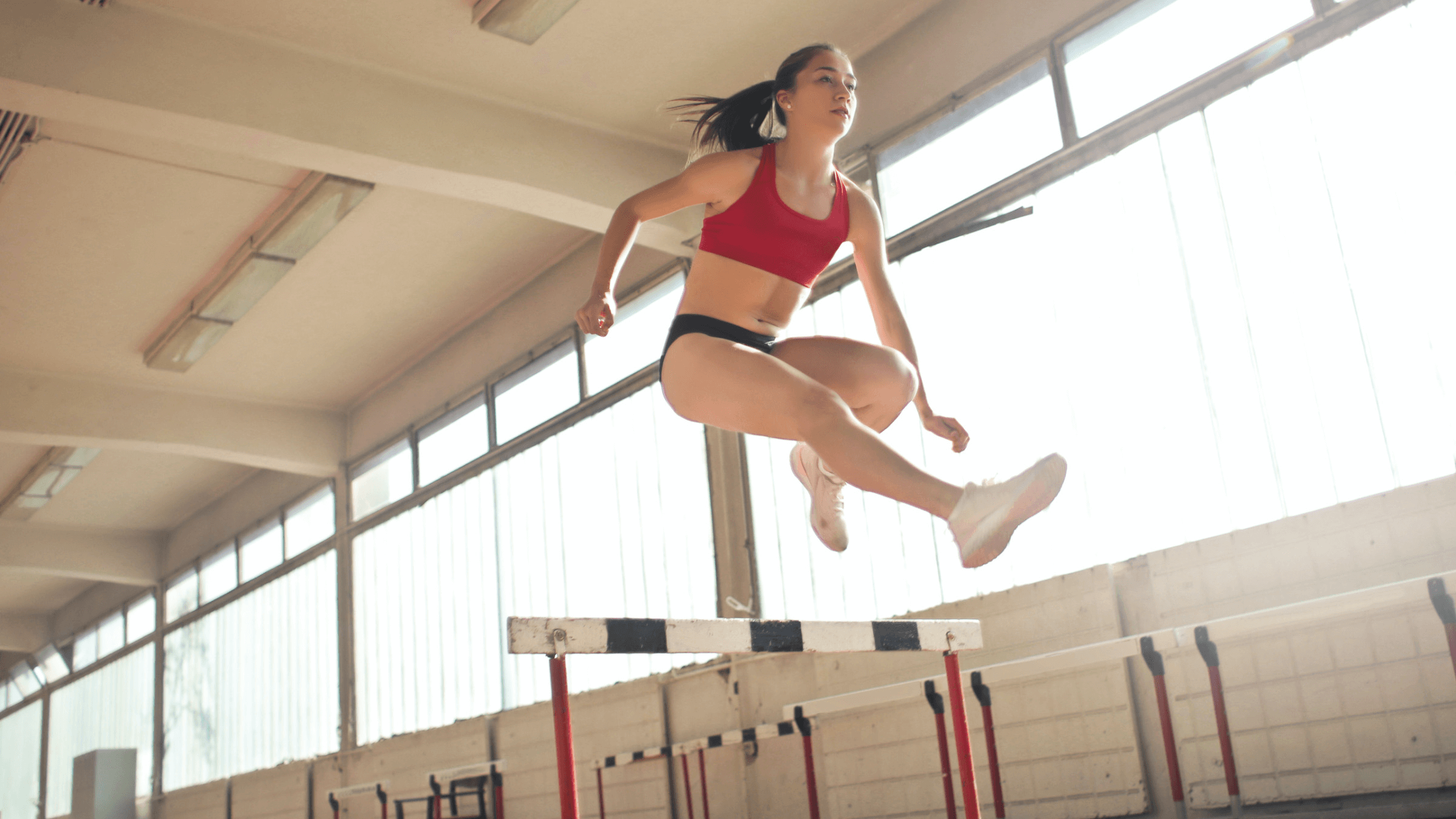Hip Stability For Gymnasts: Why Does It Matter?

Licensed Physical Therapist, PT, DPT // Dry Needling Certified // Orthopedic Certified Specialist // EW Motion Therapy Homewood
Every single cartwheel, back handspring, or split a gymnast performs relies on the flexibility and strength of their hip joints. Think about it: each bend or stretch can push the joint to the end of its range of motion, and with the amount of bending and stretching a gymnast does each practice, the joint can become stressed. So how do you ensure that your hips continue to stay healthy and withstand the impact of your skills?
Hip stability is essential to prevent injuries from overuse. Every gymnast needs to work on strength outside the gym so their body can continue to perform at the level their sport demands. Our gymnastics movement specialists at EW Motion Therapy do this for our clients, whether they need to build stability in their hips, knees, or ankles. Even if our services do not fit your needs, we still want every gymnast to build resilience to prevent injury and continue being the champions they are meant to be. Read on for our discussion of these key points:
- Anatomy of the hip joint
- Why hip stability is essential
- Ways to strengthen your hips
- How physical therapy can help
Anatomy of the hip joint
The hip joint is one of the most important joints for a gymnast. It is essential to be aware of the anatomy of the hip joint to maintain good posture and avoid hip pain.
The joint is formed by the union of the pelvis and the thighbone, also known as the femur. The hip joint is a ball-and-socket joint that helps keep your body balanced when performing movements such as jumping and tumbling. It has strong ligaments, tendons, and muscles that help keep it in place while providing strength and stability. For example, the ligaments and tendons provide stability and prevent excessive movement of the hip joint, while the muscles help move the joint.
The main muscles involved in hip stability are the gluteus medius and minimus, the tensor fascia latae (TFL), the piriformis, and the iliopsoas. The gluteus medius and minimus, also known as the "buttocks" muscles, are located at the side of the hip and work together to keep the leg stable when walking or running. The TFL runs from the outside of the hip up to the outside of the knee, helping to lift the thigh and rotate it outward. The piriformis is located deep in the buttock and helps to turn the leg externally. Finally, the iliopsoas is a muscle located at the front of the hip joint, responsible for bending and lifting the leg.
Weakness in any of these muscles can cause hip pain and instability, making it difficult to perform many gymnastics movements safely.
Why is hip stability so important?
Having stable hips is essential for performing many activities, especially gymnastics. Several different factors create stability in the hip joint. Muscles, ligaments, and tendons work together to provide strength and mobility. The gluteal muscles, adductors, hamstrings, and hip flexors are all responsible for hip stability. Additionally, the ligaments around the hip joint connect the femur to the acetabulum, providing additional stability. Lastly, the labrum and joint capsule act as shock absorbers and stabilize the hip joint. Without proper stability in the hip joint, athletes can experience hip pain during physical activity, including gymnastics. While performing specific exercises, poor posture or incorrect form may contribute to hip instability and lead to pain or discomfort.
Gymnasts must handle excessive force on their bodies - tumbling and dismounts can place up to 30x a gymnast’s weight of pressure on their joints. The core and hips provide control for most of these high-impact repetitive movements. A stable hip joint is essential for gymnastics, as it supports the demands of dynamic and complex activities. For gymnasts, the hips must be both flexible and durable. Many skills require a total hip extension, and to repeatedly perform those skills at the end of the joint’s range of motion, a gymnast’s hips must be strong enough to handle the stress. If the hips cannot withstand the pressure, a gymnast is at a higher risk of imbalance and injury.
A gymnast can have flexible hip joints and tight muscles simultaneously. This is why, when a gymnast is having difficulties with hip extension or strength, a skilled professional is one of the best people to evaluate the health of the joint and the soft tissue surrounding it.
Flexibility and mobility are not actually interchangeable terms - learn why not here.
What are the best ways to strengthen the hips?
Hip pain is one of the most common issues that occur in gymnastics, and it can be caused by a variety of factors, such as overuse or trauma. A stable hip joint is essential for gymnasts to stay safe and injury-free. It allows for optimal performance during gymnastics and all other physical activities. An unstable joint can lead to hip pain and other issues preventing a gymnast from competing at their best.
To help the hip joints withstand the stress of a gymnast’s routine, they should work with a specialist who understands both the hip joints’ dynamics and the sport’s requirements. They can begin sport-specific exercises to challenge their range of motion and rehab the joint to its strongest point. For example, hip abduction and adduction exercises can help strengthen the muscles around the hip joint and improve overall stability. In addition, core strengthening exercises can help support the hips and create better body alignment. If needed, manual soft tissue work could be beneficial to loosen everything up. Finally, physical therapists can provide gymnasts with stretching techniques to help improve hip flexibility and reduce the risk of injury. Gymnasts can do stretches before and after training to help keep the muscles around the hip joint flexible and prevent tightness.
Another benefit of seeing a specialist is working on specific skills to improve stability or flexibility. They can monitor the repetition and volume of your skills so you don’t overuse the joint and simultaneously push you to take your joint to its full range of motion. A program combining soft tissue work and joint mechanics is a recipe for success, and your specialist can coordinate your therapy with your coach to prevent overuse injuries.
How can physical therapy help you build strength?
Now you know more about how strengthening the hips can be instrumental to a gymnast’s success. Physical therapists have the knowledge and experience to help gymnasts diagnose and treat hip pain and improve their performance. Through physical therapy, gymnasts can gain improved range of motion, strength, balance, and flexibility, which are essential for proper hip stability in gymnastics. Strength is not just necessary in a gymnast’s hips, but throughout their body, due to the nature of the sport and the high-impact skills they do every day. Strength training can be a great way to ensure your body can handle the pressure of your sport and prevent injuries. A physical therapist who understands gymnastics and the body mechanics required can be a great specialist to have in your corner so you can equip your body for success.
Many movements a gymnast performs involve the hips, and beyond the gym, your hips are essential for healthy activity while walking or going up and down stairs. Physical therapists are experts in the science of movement, and if you need to build strength and ensure healthy joint mechanics, they can be great specialists to see. If you are curious about what else our gymnastics program can do for you, click the button below to download our self-assessment and see if our services fit your needs.

